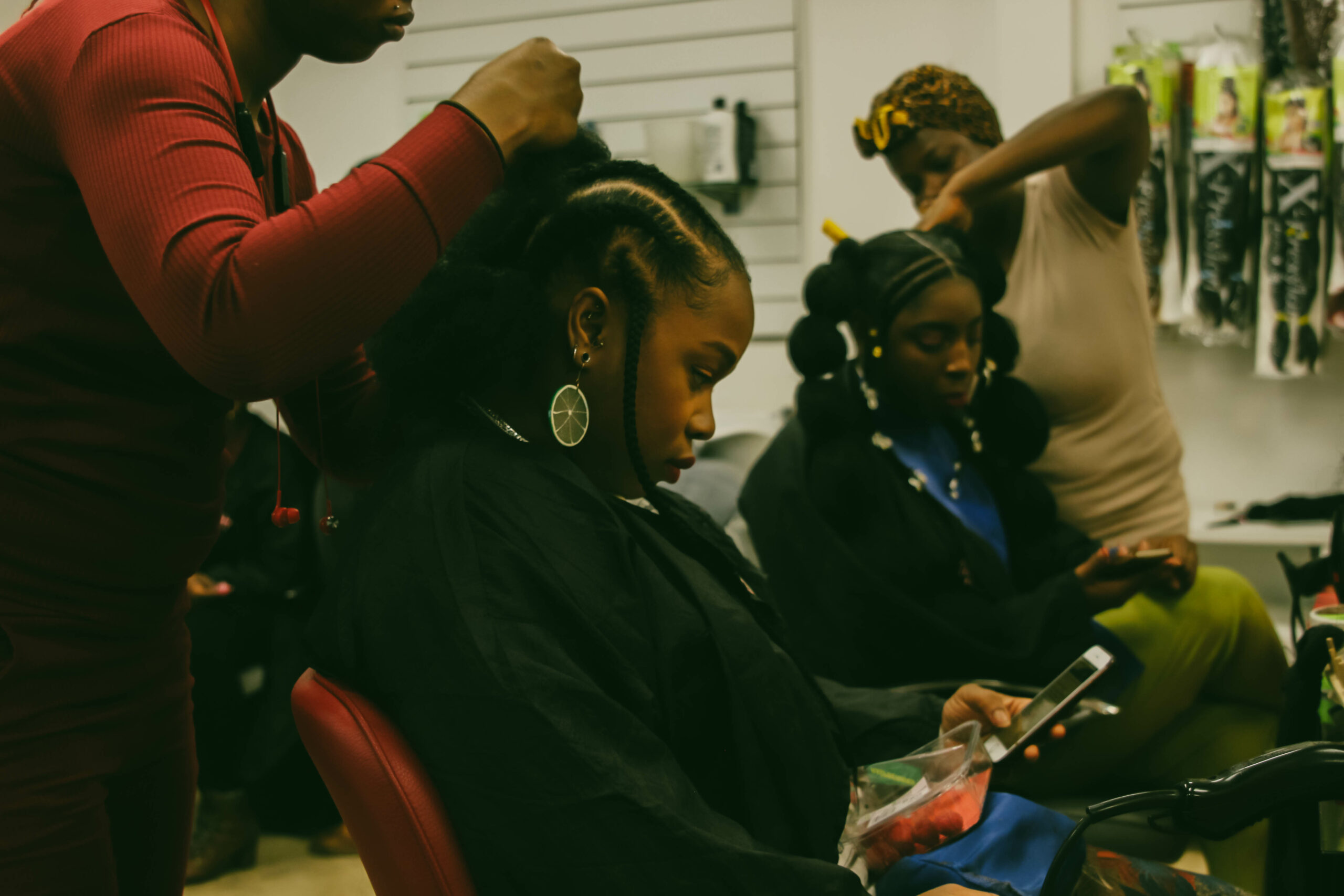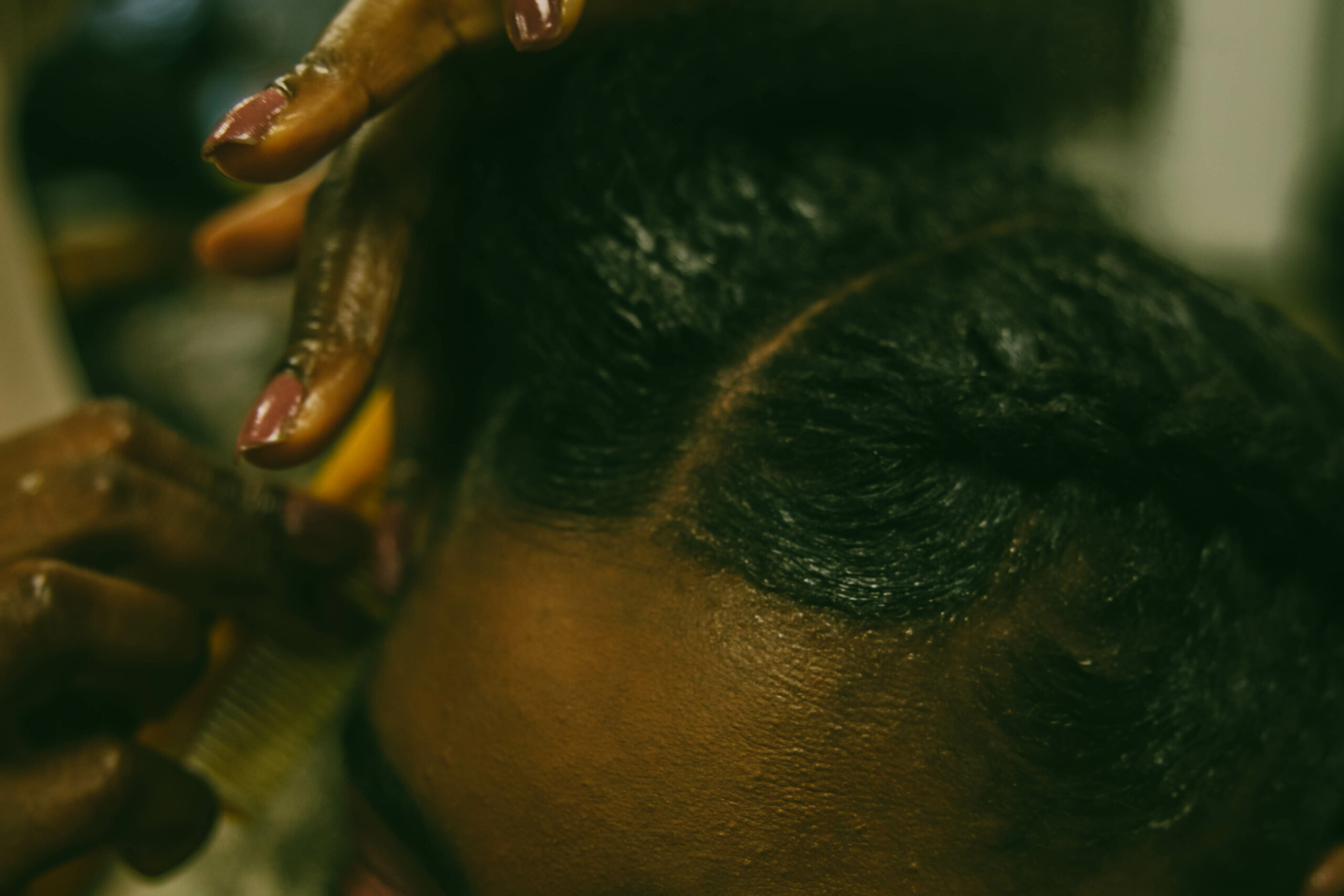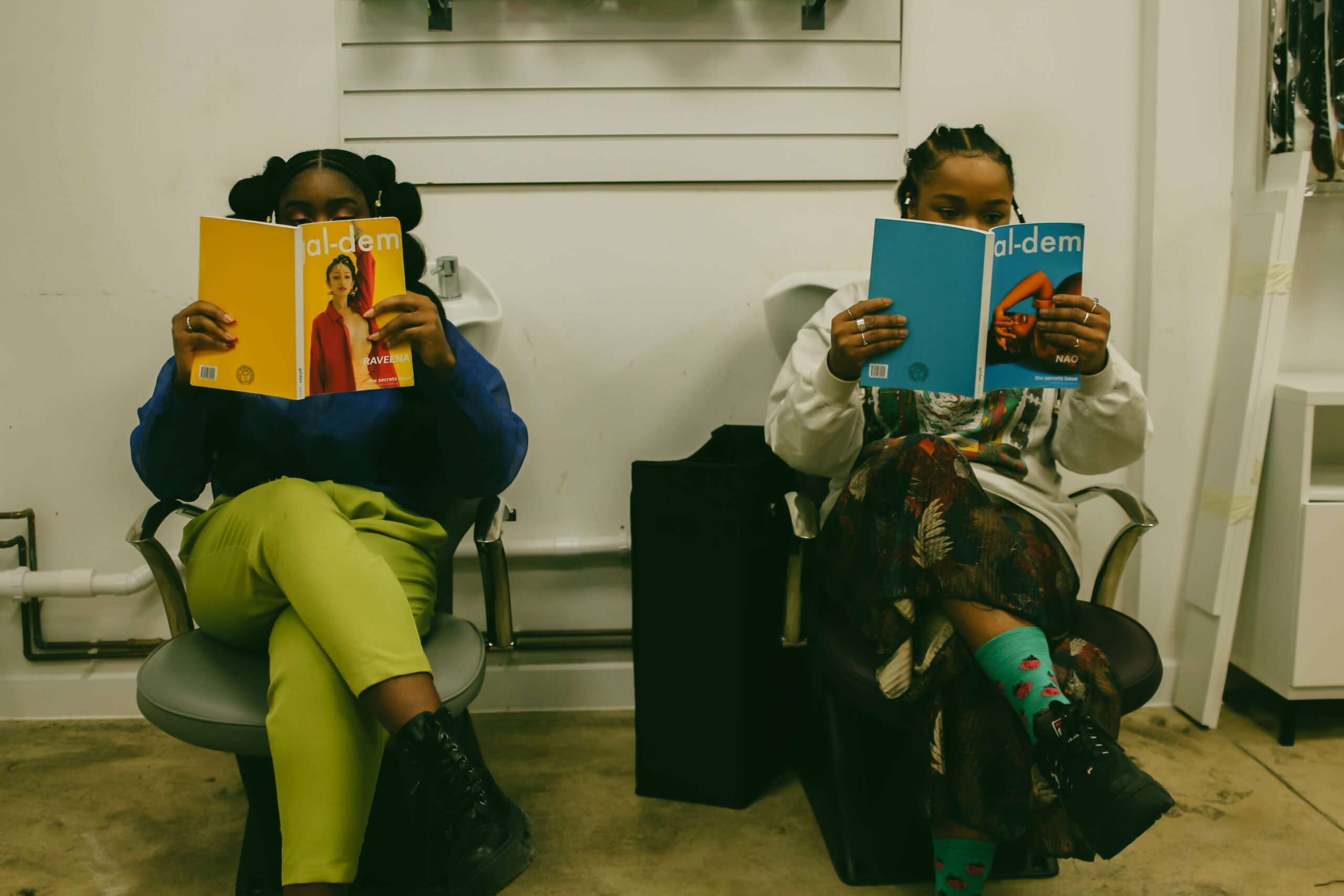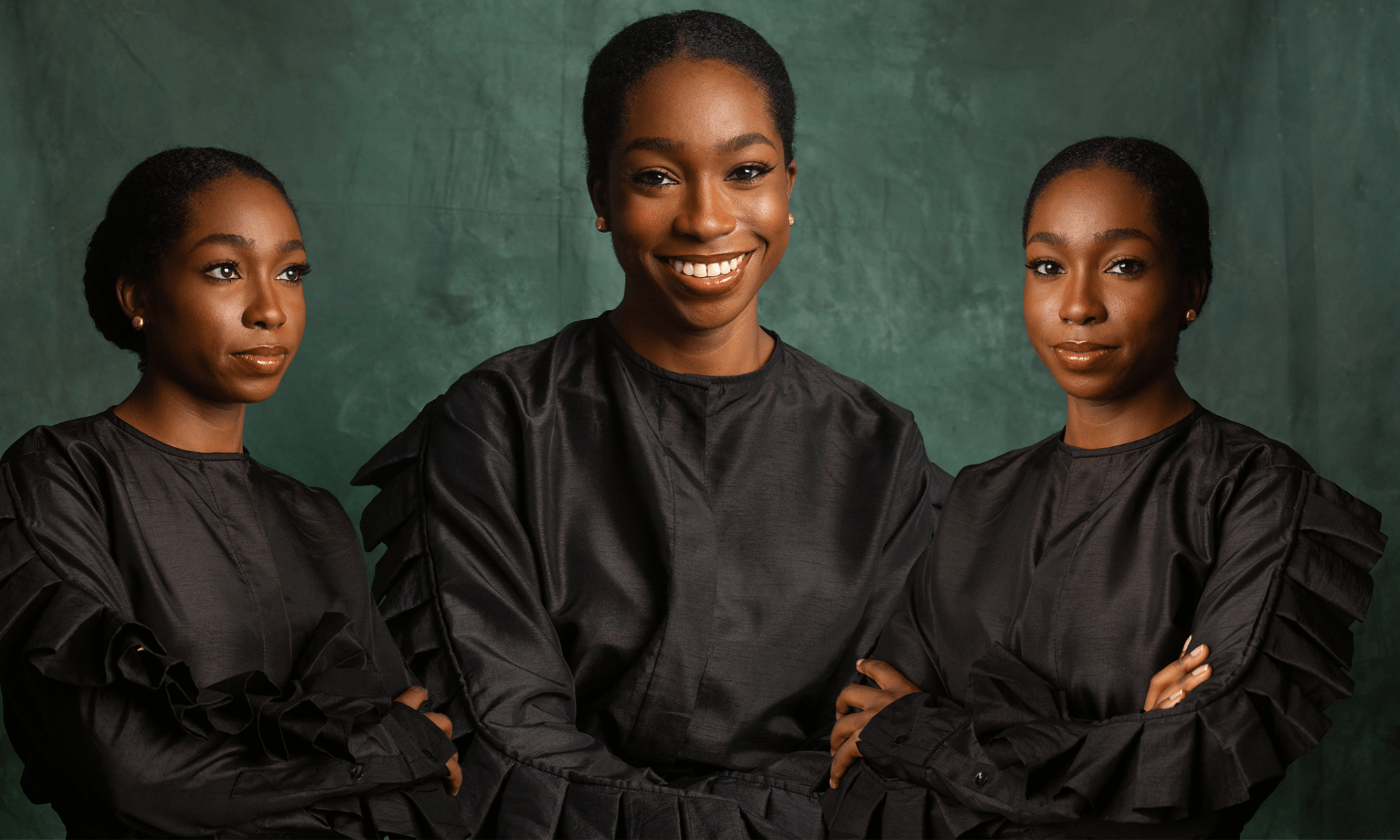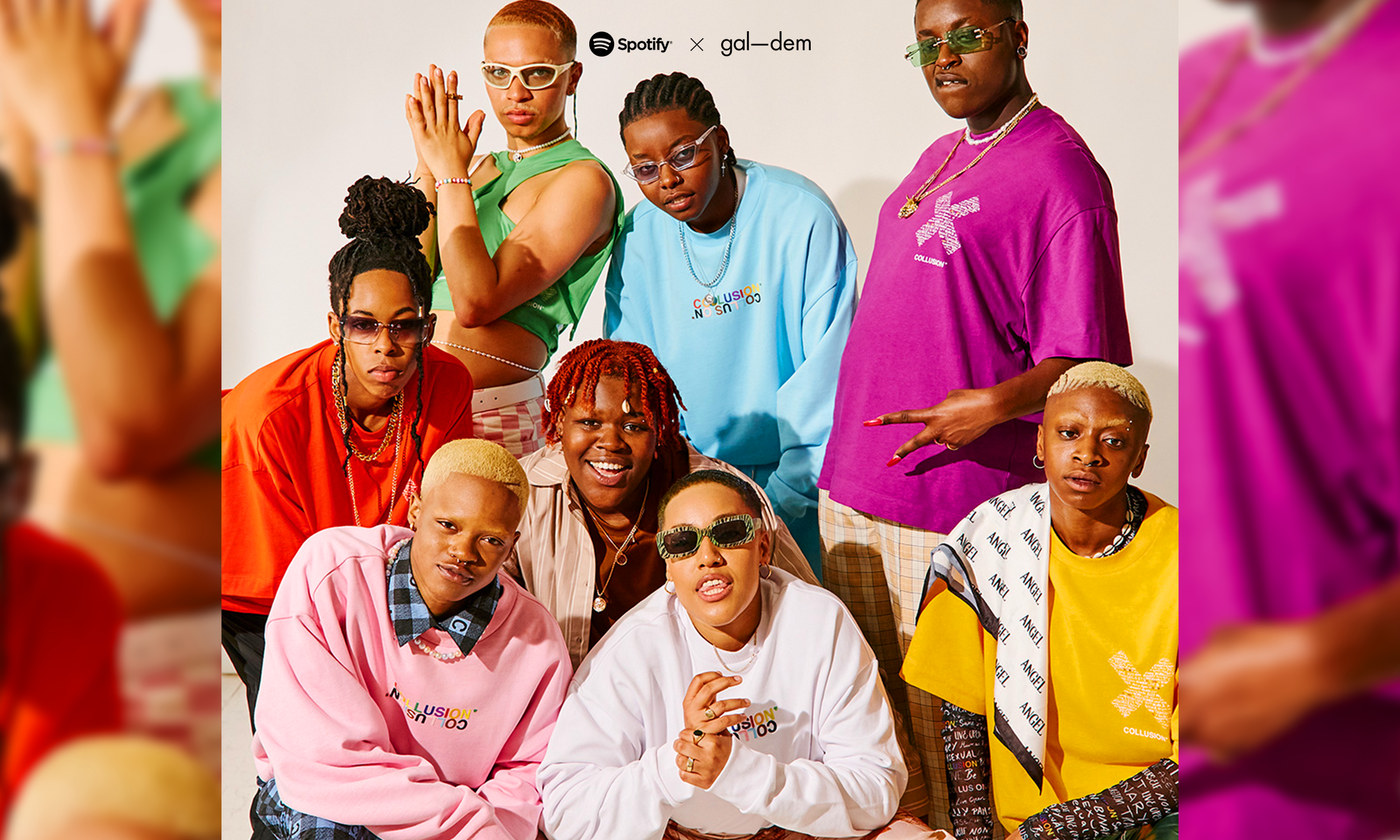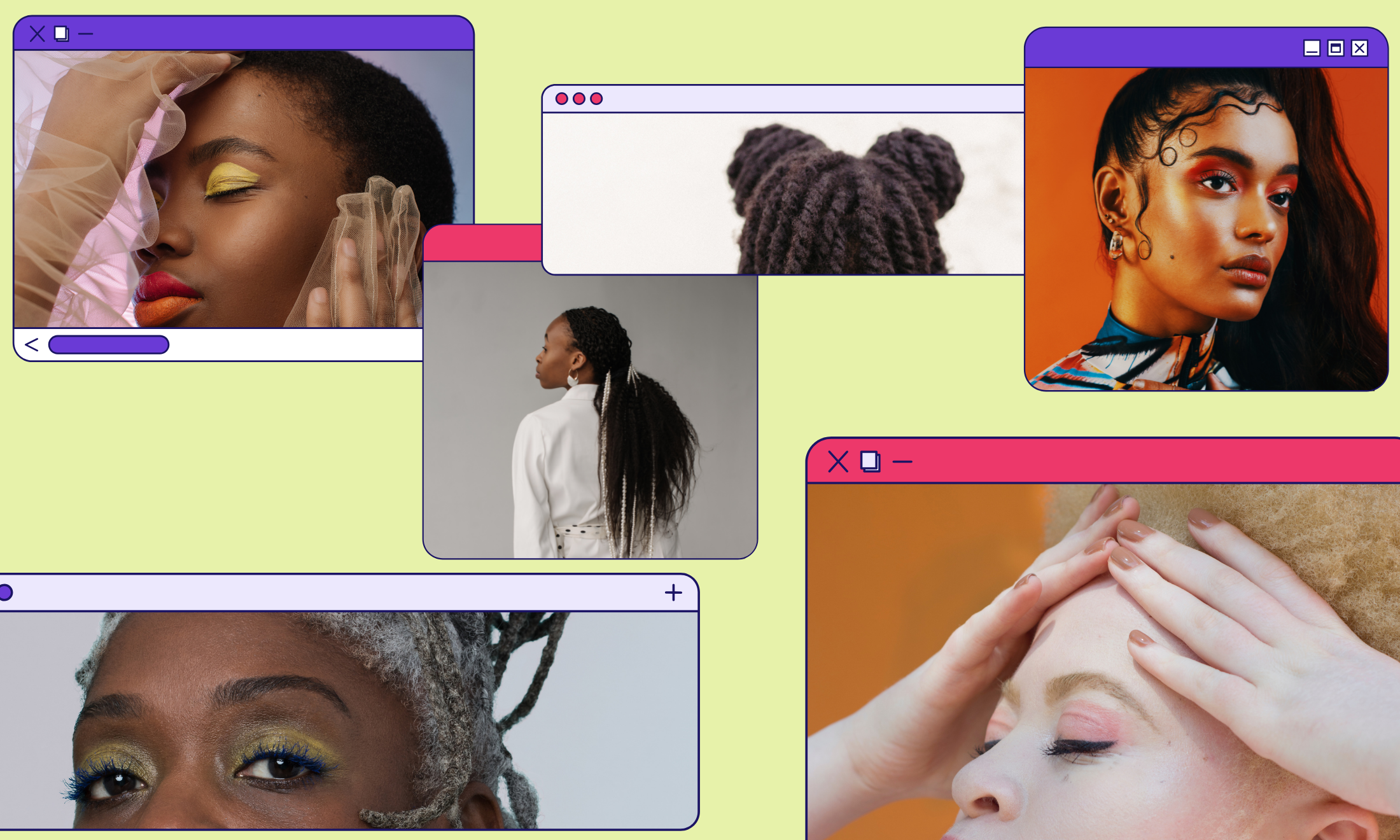
How technology is making Black hair styling more accessible
Black hair knowledge has historically been passed down through generations, but is the internet changing that?
Zainab Kwaw-Swanzy
03 Sep 2021
Supported by Pinterest
For many Black people, hair styling starts at home. Your mum commands you to sit down so that she can comb out your hair and grease it. You visit your aunt’s house so that she can put your hair into canerows. You take a trip down to the local hair salon where you’re surrounded by neighbours and friends of friends, sharing stories and gossiping in between getting their hair treated. These experiences are social, informal, and intimate (although the way that your hair is roughly handled by the person styling it is far from intimate). Hair styling practices within Black communities have been passed down through generations. It’s how my mum learned to do hair, and how her mum learned to do hair. This knowledge is sacred and has been kept within the community.
My afro hair is thick and long which has meant that when I was younger, my arms often grew tired from attempting to brush and comb it. For this reason, I relied on my mum and sisters to do my hair for a much longer time than I would have hoped. When most of my Black friends were installing their own weaves and straightening their hair using a range of products, I was stuck in between my mum’s legs every evening, asking for her to style my hair in a particular way because I hadn’t inherited the skills required to do Black hair.
When I got to my 20s, I became concerned that I’d never learned to canerow. I worried that I would be a failure of a parent if I had kids and didn’t know how to do their hair properly. This is what motivated me to search through hours of online tutorials until my fumbly fingers managed to weave my hair into something that loosely resembled a pretzel. Not perfect, but it was a start!
When it comes to the styling of Black hair, the barrier to entry is much lower than it once was, due to information becoming more accessible online. I surveyed over 350 Black women for my upcoming book ‘A Quick Ting On: The Black Girl Afro’ and found that 77% of those asked said social media was the top factor in positively affecting relationships with hair. The increase of Black influencers, bloggers and online brands have led to a proliferation of knowledge in the hair space. With the click of a button, I can search for products that are tailored to afro hair, find people with a similar hair type to me, and discover new hairstyles to try. Parts of my hair journey felt lonely because I was ashamed to admit that I struggled to manage my curls. I took solace in this online hair community which made me more confident about my hair though educational articles and pictures of #HairInspo.
Although it’s been great to see a new modern natural hair movement come to life with the help of more diverse social media content, I’ve always been aware that it is often dominated by looser curls on lighter skinned women. Even within the natural hair movement, not all hair types have been fully represented and championed. We need to challenge the algorithms used today and push technology to further enable inclusivity.
Just recently, Pinterest has created a new tool which allows users to search for content by skin tone, and the platform is now rolling out a hair pattern tool. Using a new type of vision technology, the platform can identify different hair types and users can search for them by category: protective, coily, curly, wavy, straight and shaved/bald. It can be frustrating looking for hair styles and only being presented with a narrow selection of curls. Terms like “kinky” and “curly” are used very loosely online and I don’t always trust that the hair resources I see relate to hair like mine. I can’t wait to see how Pinterest’s tool will help users navigate the 500 million images of hair on its platform.
Instead of wading through hours of content like I did years ago, people can now sort their searches by the thickness or curliness of their hair, and even find guidance on how to canerow it. If I had this tool back in the day, not only would I have learned how to do my own hair at a quicker pace, but I also would have found people with similar hair journeys to me. Perhaps I would not have felt so alone.
The availability of this information online will continue to empower Black people and level the playing field within the hair industry. It’s been incredible to see a rise in Black-owned hair care brands who use their platforms to educate people on Black hair styling and create products that truly meet the needs of afro textured hair. For years, high street beauty shops haven’t stocked a diverse range of hair products, and Black people have had to go to specialist Black hair and beauty stores to find the products they need. These shops are prevalent within the UK’s big cities, but for those living in smaller rural locations, access to Black hair services, products and information is sparse. Online platforms have changed that; regardless of where you are located, you can now find the support and guidance you need for your hair.
New technology will help to build a new community of hair styling, with information flowing through generations even easier than before, where we no longer have to do the heavy lifting to find the help that we need. Not only do we have the support of our close networks to lean on as we navigate our hair journeys, but technology has enabled us to connect across the globe and discover hair guidance in a way that was impossible before.
I still go to the salon to get my hair braided, and ask my sister to lay my edges when I can’t quite get them right. But now, I have an extended online family who weave knowledge, comfort and confidence into me by reminding me that I’m not alone on this hair journey.


